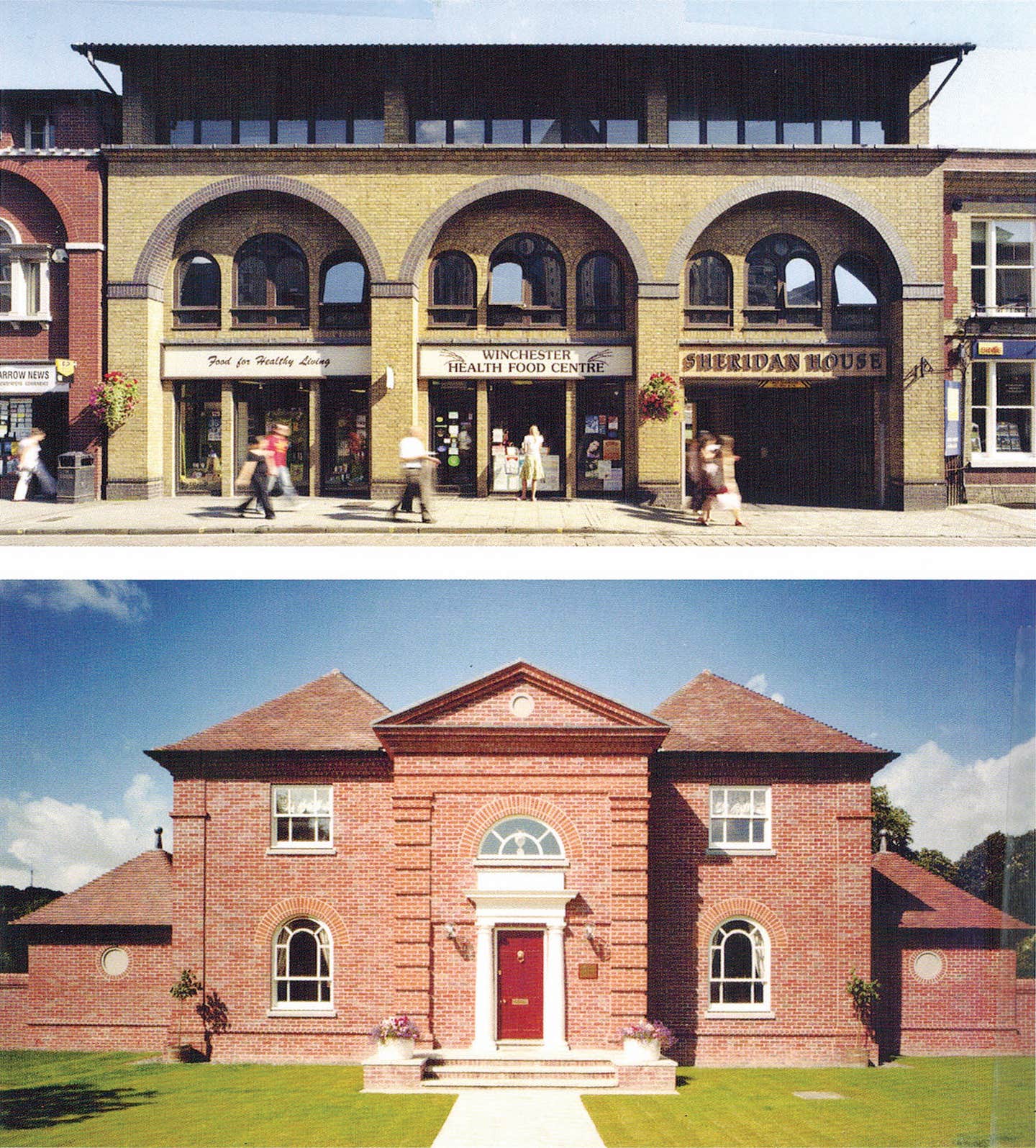
Features
Book Review: Classic Columns
By Robert Adam; Edited by Clive Aslet with a foreword by Sir Roger Scruton
Cumulus Books, London, 2017
264 pp; Hardcover; 356 Color images; $85
ISBN: 978-0-9564-1464-9
As an Amazon Associate, we earn from qualifying purchases made through affiliate links.
Traditional architecture doesn’t have many “superheroes”—but architect Robert Adam is about as close as they come. That’s why his latest book, Classic Columns, deserves serious study by every professional who believes respect for tradition has relevance for creating a beautiful, livable, sustainable built environment.
Adam is not all that well known in North America—although his winning of the 2017 Driehaus Prize for classical architecture has certainly raised his profile. Robert Adam is the founder of ADAM Architecture, an architecture and urban design practice in Britain with offices in Winchester and London. With a staff of around 70, the firm is the largest in Europe specializing in classical and traditional architecture, along with urban planning and design.
Unlike many classically oriented design practices, ADAM Architecture is not limited to designing costly manor houses for wealthy clients. Adam’s firm has also created numerous public and commercial buildings, and is also deeply involved with urban housing and civic planning. Thus, he has developed the rhetorical skills needed for dealing with zoning officials, design review boards, and Modernist tastemakers who insist that historically inspired design is “ersatz architecture.”
In addition, Adam has not been confined by his role as co-director of a major architectural practice. Besides being an award-winning designer, Adam is also a scholar, theorist, author, philosopher, teacher, lecturer, architectural activist—and an excellent writer. He is a tireless missionary for traditionalism in a digital world that’s spellbound by Modernism and its endless quest for “the shock of the new.” As Richard H. Driehaus said in presenting the 2017 Driehaus Prize: “Robert Adam has made seminal contributions to establishing a dialogue between tradition and modernity,”
What elevates Adam to the level of traditionalist superhero has been his long-running vigorous (but civil) debate with die-hard apostles of Modernism throughout the realm, especially those at the highest levels of the British architectural establishment.
Adam is a member of Royal Institute of British Architects (RIBA), the citadel of English Modernism. Despite being vastly outnumbered within RIBA, he has been an ardent and consistent advocate for the “modernity of tradition.” Even though the majority of his RIBA colleagues strongly disagree with him, through his collegial good nature Adam is regarded well enough within RIBA to have been twice elected to its Council, and from 2001 to 2003 became Honorary Secretary.
It was during this period he founded the RIBA-linked society, the Traditional Architecture Group (TAG). TAG is “committed to developing the values established by traditional and classical architecture, and developing them as a language relevant to the modern world.” (Can you imagine an AIA-affiliated group dedicated to such a mission?) Adam is also a founder of the influential International Network for Traditional Building, Architecture and Urbanism (INTBAU) and several other architecture-related organizations.
As if running a successful practice coupled with teaching and architectural activism wasn’t enough, Adam has also found time to write numerous books and articles. And that’s where this current volume, Classic Columns, comes in. The book is a compendium of 26 essays and lectures Adam has produced over the years and which might otherwise be lost if they weren’t gathered between hard covers.
The breathtaking scope of ideas from this architectural super-achiever provides a rugged intellectual underpinning for any traditionalist who finds himself or herself needing rhetorical ammunition to ward off Modernist adversaries. Because of the range of subjects, most users won’t start at page one and read straight through to the end. Rather, it’s a great book for browsing—dropping in to read an essay or two on issues you’re confronting today.
Editor Clive Aslet divides the material into seven major topic areas: Tradition; Classicism; Cities; The Disappearing Architect; Globalization; Dreams of Arcady; And Tomorrow. Topics range from micro-subjects like challenges facing today’s architect up to worldwide subjects like the growing tension between globalization and localism, as well as China’s growing influence in the architectural universe.
Although frequently called a Classical architect, Adam is more properly termed a traditionalist because of his fluency with many historical and vernacular idioms. Many (like this reviewer) will find Adam’s in-depth exploration of tradition to be of exceptional interest. Adam goes far beyond “style wars” to examine the psychic and cultural reasons why the general public still prefers traditionally informed buildings despite a century of brainwashing by Modernists.
In his closely reasoned essay on “Buildings of our Time,” he carefully dissects the absurd notion that architecture “of our time” automatically dictates Modernist geometric abstractions. In similar fashion, his article on “Can Restoration be too Authentic?” demolishes Modernist insistence that interventions on older buildings must be glaringly different from the historic original.
Practitioners who need to publicly defend the importance of place-making and creation of soul-satisfying architecture should have this compendium at their fingertips.
Clem Labine is the founder of Old-House Journal, Clem Labine’s Traditional Building, and Clem Labine’s Period Homes. His interest in preservation stemmed from his purchase and restoration of an 1883 brownstone in the Park Slope section of Brooklyn, NY.
Labine has received numerous awards, including awards from The Preservation League of New York State, the Arthur Ross Award from Classical America and The Harley J. McKee Award from the Association for Preservation Technology (APT). He has also received awards from such organizations as The National Trust for Historic Preservation, The Victorian Society, New York State Historic Preservation Office, The Brooklyn Brownstone Conference, The Municipal Art Society, and the Historic House Association. He was a founding board member of the Institute of Classical Architecture and served in an active capacity on the board until 2005, when he moved to board emeritus status. A chemical engineer from Yale, Labine held a variety of editorial and marketing positions at McGraw-Hill before leaving in 1972 to pursue his interest in preservation.








